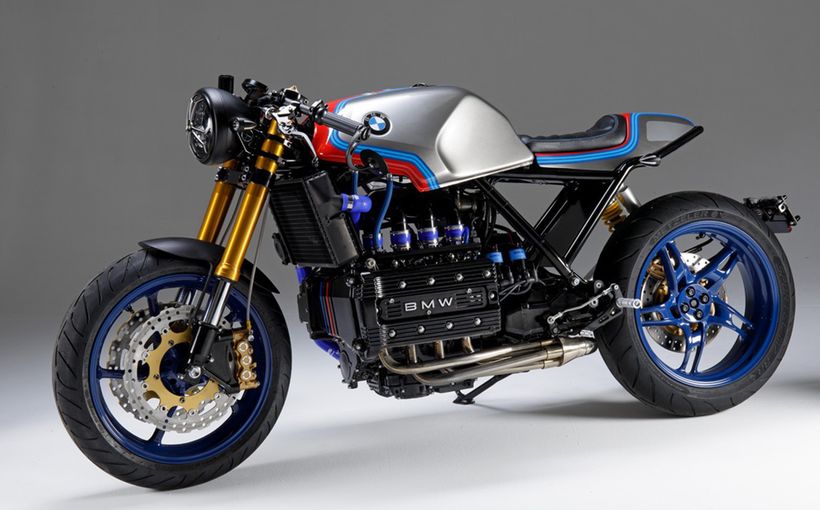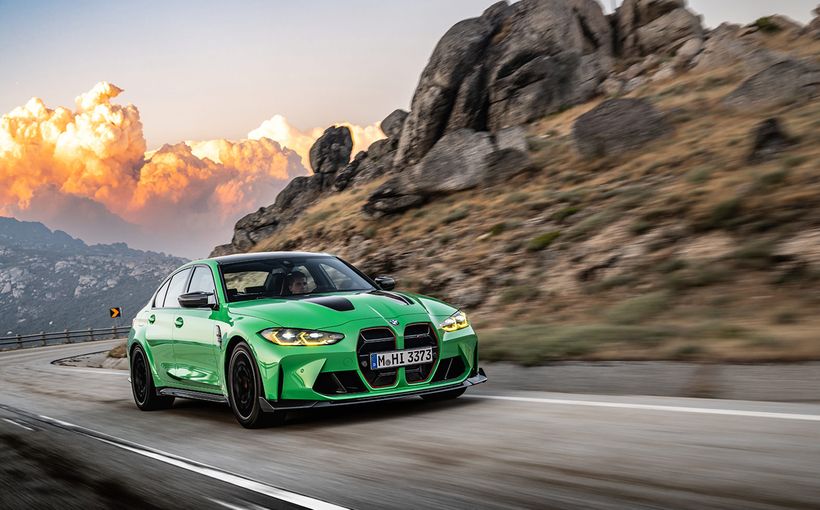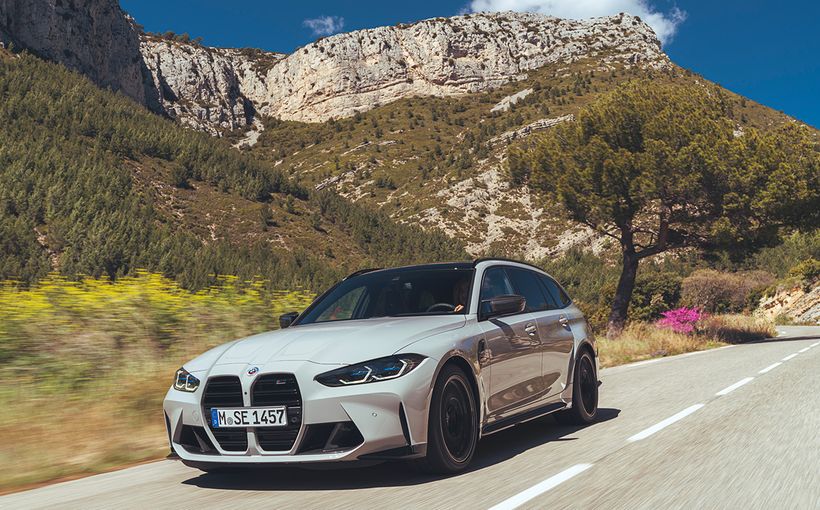
You could say the BMW 2002 wrote the book about quality sporting sedans. It's virtually impossible to convey the impact this now slightly dumpy looking two-door (was it a coupe or sedan?) BMW had 20 years ago. There was simply nothing faster point to point with an engine anything like the same size- unless you drove an Alta - but then the Alta lacked the BMW's teutonic quality. Above all the 2002 had balance and made good drivers feel like great drivers. Motoring magazines around the world raved about it, enthusiasts loved it, and BMW couldn't build it quickly enough.
Putting a big engine in a small body wasn't a new idea. But the two-litre, single cam four that replaced the 1.6-litre engine of the 1602 punched out enough power to give the 2002 impressive acceleration. The 2002 - the flu stern bombe (whispering bomb) - was to have an enormous influence on BMW and sporting sedans around the world and brought prosperity to the company.
The 2002 led to the 320 and the 323, and with each successive model the small BMW grew faster, although none matched the charisma of the first of this new generation.
Almost two years ago BMW turned its back on its heritage and in so doing nearly ran off the rails. The cause of the confusion was the introduction of the 3- and 5-series cars of the so-called eta engine. Eta stood for efficiency and was BMW's attempt to build a fuel-efficient engine to run on unleaded fuel. The 2.7-litre, six-cylinder engine relied on low revs and tall gearing to achieve excellent fuel consumption and, in truth, reasonable acceleration, at least in the lighter 3-series model. It worked well enough in Germany, but got a hostile press in the US and Australia.
A once defensive BMW now admits it was a mistake, for the very nature of a BMW demands high performance engines that rev and the eta's 4 700 rpm red line just didn't make it an Ultimate Driving Machine. Today the redline of the new 325i has jumped to 6500 rpm and you can take that slogan seriously again. The eta engine is no longer, and must have been a very expensive exercise.

The new range of 320i and 325i also recognises the unfortunate fact that J3MWs can no longer compete with the Japanese. The days of a $20,000 318i are long since gone, and today there isn't a model under $50,000. The anaemic four-cylinder 318i has been replaced by a two-litre, six-cylinder 320i that delivers 95 kW, compared to the 318's 75, and it has a pleasant level of performance, provided you're prepared to work the gear lever, because the gearing is tall and maximum torque of 164 Nm comes at 4300 rpm.
But it is the 325i that reverts to the inspiration of old. The 1988 325's 2.5-litre, six-cylinder engine generates 40 per cent more power than the 325e, and its 125 kW is 23 kW up on the old leaded 323i, the last small BMW performer.
This is the engine BMW enthusiasts demanded. It is absolutely turbine smooth. Those extra rpm are there to be used, the engine spinning effortlessly to the very necessary cut-out at 6400 rpm. Since maximum torque is developed at 4300 rpm (on the eta it was produced at 3250 rpm) and maximum power at 5800 rpm (compared to 4250 rpm) this is a traditionally peaky Munich engine that really needs at least 3500 rpm on the tacho before it begins to sing that marvellous hard-edged hum that is pure BMW.
The performance figures it generates are nothing short of brilliant. Maybe not at the price, but certainly for a normally aspirated engine of this capacity. Porsche's new $110,000 944S is slower over the standing 400m. The M325i tested broke through the 16 second barrier to produce a consistent 15.9 sec time, 0.3 quicker than its Stuttgart rival. And rival it is, for the car tested came in the M325i guise, and carried a price sticker of very close to $89,000.

The new model chops a full second off the 325e's 400m time and is half a second quicker than the leaded 323i that is its true predecessor. In M form the final drive ratio has been changed from the standard car's 3.71 to 3.91 while the bottom three gear ratios are closer. In this guise it will pull to the cut-out in fourth gear at 181 km/h and go on to 216 km/h at 6200 rpm in fifth, not too much slower than the M3. Peaky though the engine may be, it will still pull smoothly from low revs and is a match for the 323e in virtually every 30 km/h segment in the gears. Yet it is almost able to equal the eta car's economy figures. Even in hard driving we couldn't get the M325i below 8.7 km/1 (24.6 mpg), and this is probably lower than most owners can expect to achieve as an average.
This M-version shouldn't be confused with the M3 driven in the previous issue. That car has a twin-cam, 2.3-litre four cylinder engine. The M325i has the same single cam six-cylinder engine as the standard 325i, with the shorter gearing, for a marginal improvement in acceleration, excellent sports seats and a variety of BMW Motorsport equipment that includes the close-ratio gearbox, limited slip differential, firmer dampers and a variety of body changes to establish its identity from the normal 325i that starts at $65,750. The base M325i will go on sale in May for around $75,750. The test car's options included an electric sunroof, computer, electric windows, leather upholstery, metallic paint and superb 205/55 Pirelli P600 tyres in place of standard 195/65s.
The entire 3-series range for '88 comprises 11 models. There are two and four-door sedans in both manual and automatic forms, and the 320i is offered as a full convertible four-seater at $72,000. Two thirds of the first year's supply of convertibles has already been sold.
The M325i gets closest to having the incredible balance of the old 2002. Yes, there is a hint of oversteer on a trailing throttle but only at a ridiculous speed, and . it wouldn't be a Bimmer without the need to flick the wrists over to correct the change in camber angle of the rear suspension that induces the tail to drift wide. In the wet, once the Achilles heel of all BMWs, the P600s hang on superbly with never a hint of lost traction. The engine-speed sensitive rack and pinion steering, on paper low geared with 3.9 turns lock to lock, gives just the right degree of road feel. It is beautifully accurate. There is no lost play at the straight ahead and the car turns into corners precisely, with the kind of finesse that has the driver looking for more corners.

The roadholding is a match for the handling. The sheer performance gives this car a spirit that goes a long way towards justifying the price. Firmer dampers and springs which come with the 325i give the 2.5-litre BMWs a secure ride that is not as comfortable as the smaller-engined models, which ride exceptionally well but at the expense of handling precision. The gear change is of the sweet snicksnick variety, the synchromesh unbeatable, although the clutch is heavy, tiresomely so in commuter traffic. We wish we could say the same of the brakes, for the ABS system on the M325i might work well in an emergency, but in everyday braking, pedal travel is excessive and spongy to boot. If it goes like crazy then it doesn't stop the same way.
Finish is of the usual outstanding BMW level, the seats and the driving position are perfectly matched to the nonadjustable and leather-bound steering wheel, while the instruments and dashboard are essentially unchanged. This is a compact car and it is no good pretending it is anything other than a three-plus-one seater, for there is both a lack of headroom and especially legroom in the rear. Given its price, equipment levels aren't special. That is a function of the exchange rates that have made life so difficult for European car makers who remain on the local scene.
If there is a finer sports sedan sold in Australia today I'm hard pressed to remember it. Of course the M325i is horribly expensive - you can buy a Jaguar XJ6 for the same money - but nothing this side of a Porsche 944 Turbo communicates.
Go Back in time with the Wheel Archive. Get FREE access to 5 years of Wheels archive content now!  Protect your Classic. Call Shannons Insurance on 13 46 46 to get a quote today.
Protect your Classic. Call Shannons Insurance on 13 46 46 to get a quote today.









